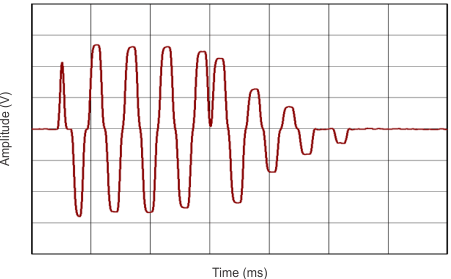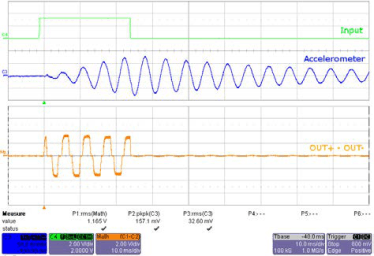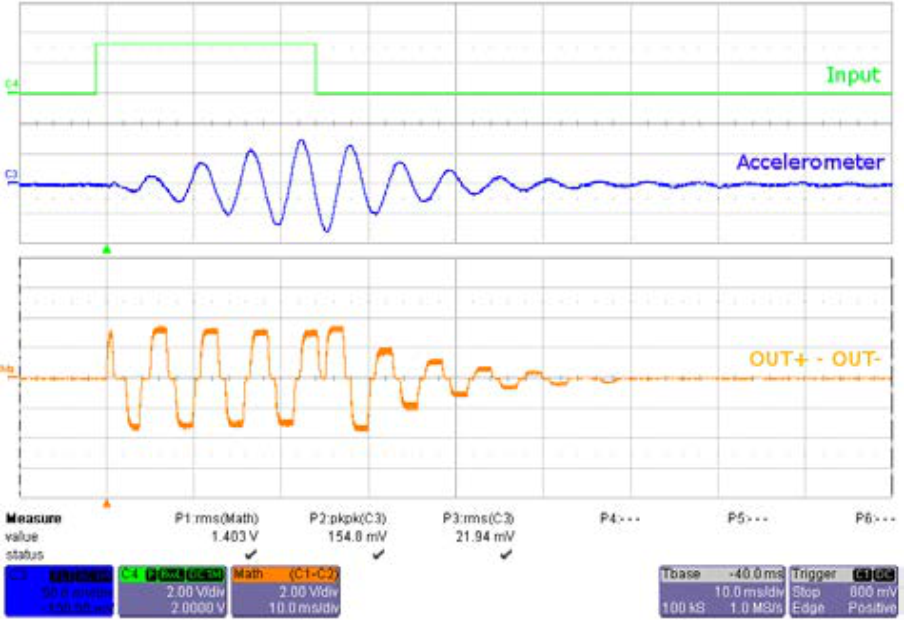SLOA188A October 2013 – November 2021 DRV2603 , DRV2604 , DRV2605 , DRV2605L-Q1 , DRV2624 , DRV2625
5 Auto-Resonance Braking
LRA braking is a unique feature only available on the TI auto-resonance drivers. An LRA must be driven at the resonant frequency to obtain the best vibration and startup performance. Likewise, to brake an LRA, it must also be driven using the resonant frequency, except 180 degrees out-of-phase.
Figure 5-1 shows a click waveform that is driven at resonance for 4 1/2 cycles. Braking is then applied using a 180 degree out-of-phase sine-wave. In addition to applying the inverse phase waveform, the DRV2605 and DRV2625 also tracks the acceleration of the LRA and adjusts the output voltage according to the level of the acceleration. This ensures the LRA stops quickly and does not begin vibrating again.
 Figure 5-1 Auto-Resonance Braking
Figure 5-1 Auto-Resonance BrakingFigure 5-2 and Figure 5-3 compare the stop time of an LRA with braking and an LRA without braking. Notice the orange output waveform in Figure 5-3 reverses phase at the falling edge of the input signal. This active braking allows the LRA to stop 75 ms quicker than the waveform in Figure 5-2 that does not brake. This translates qualitatively into a "sharper" or "crisper" click.
 Figure 5-2 Click without Braking
Figure 5-2 Click without Braking Figure 5-3 Click with Braking
Figure 5-3 Click with Braking